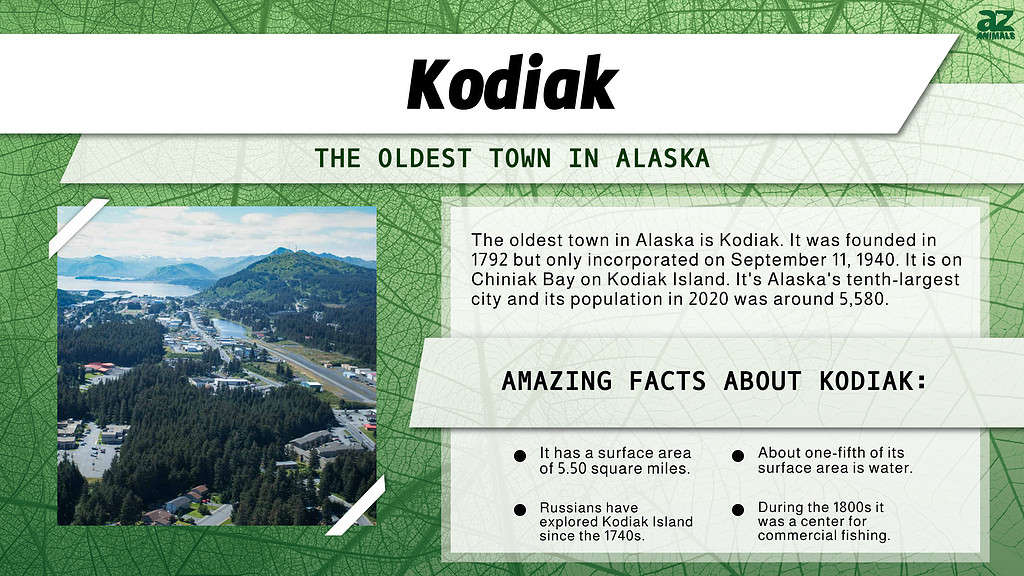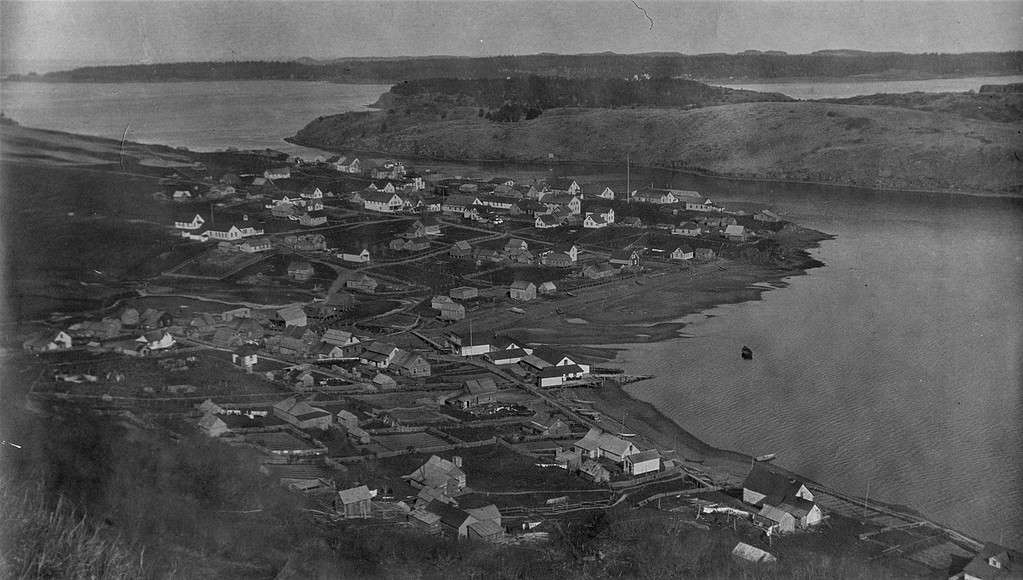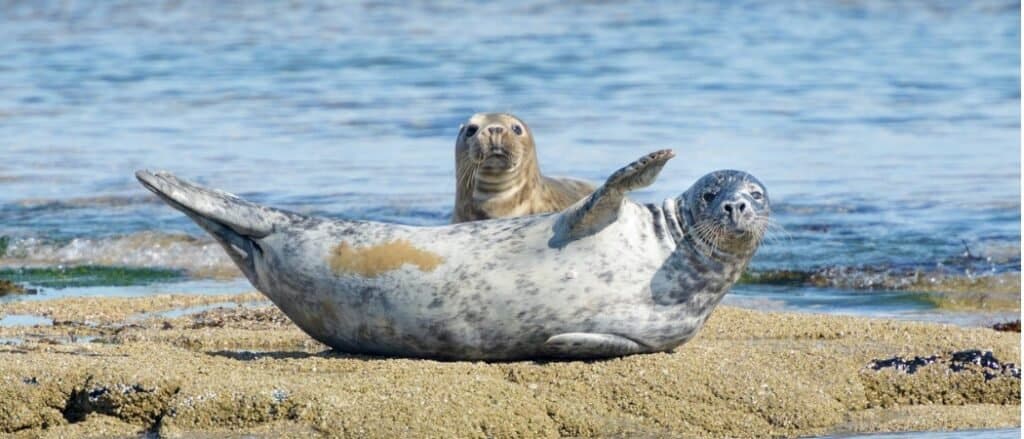Alaska, the 49th state, has many old settlements, communities, and cities. It’s a beautiful place to visit. Having just one week isn’t enough to enjoy Alaska’s natural beauty and charm. Some amazing places in this cold state are Wrangell St. Elias National Park, Glacier Bay National Park, Mount Roberts, Anchorage, Sitka, and the Aleutian Islands. But what about the oldest town in Alaska? Is it worth a visit? The oldest town in Alaska is impressively more than 200 years old. Can you guess the name of this old town? Follow along to learn more about it including its history, fun things to do, and the wildlife that calls it home.

What Is the Oldest Town in Alaska?
The oldest town in Alaska is Kodiak, which was founded in 1792. This old and charming coastal city is on Chiniak Bay on Kodiak Island. Although technically the oldest town in Alaska, it was only incorporated on September 11, 1940. Instead, the city nicknamed Alaska’s “first city” is Ketchikan which was incorporated on August 25, 1900.
Kodiak is a small town with a surface area of 5.50 square miles. About one-fifth of the surface area of the town is water. The town’s population, according to estimates from 2020 is about 5,580. With less than 6,000 people, it’s the tenth-largest city in the state.

Kodiak is the oldest town in Alaska, first founded in 1792.
©Btphelps, CC BY-SA 4.0 <https://creativecommons.org/licenses/by-sa/4.0>, via Wikimedia Commons – Original / License
The History of Kodiak
So, why was Kodiak founded? Long before Europeans first stepped foot on Kodiak, the Alutiiq people lived on the island for at least 7,000 years.
Russian explorers have recorded and explored Kodiak Island since the 1740s. Alexander Baranov, the Russian Shelikhov-Golikov Company chief manager, founded Kodiak in 1792. It was originally called Pavlovskaya Gavan (Paul’s Harbor). Quickly, the area developed and grew, adding a warehouse to process sea otters. This popular small town became the capital of Russian Alaska before it was moved to modern-day Sitka in 1804.
Kodiak during the 1800s was a center for commercial fishing. There were many canneries throughout the island. In 1941, the Kodiak National Wildlife Refuge was established. This large refuge includes the southwestern two-thirds of Kodiak Island.
Things to Do in Kodiak
The city of Kodiak has rich history and culture. You can learn a lot by just spending a day or two exploring the city. While visiting the oldest town in Alaska, you can see museums, and wildlife, and enjoy delicious and fresh seafood.
Kodiak is home to the Alutiiq Museum and Archaeological Repository. Here you can learn about the cultural traditions of the Alutiiq of the Alaska Native people. This cultural center is small but important. It’s located in Kodiak’s historic downtown.
Another excellent museum in this charming town is the Kodiak History Museum. It was previously called the Baranov Museum. This history museum is in the Russian-American Magazin. If you can’t make it to this local history museum, you can also enjoy an interactive virtual tour.
A must-see place in Kodiak is Kodiak National Wildlife Refuge. Start by entering the visitor center in the city of Kodiak and view the impressive skeleton of a 36-foot gray whale.

A great place to visit in Kodiak is the Kodiak History Museum, which used to be called the Baranov Museum.
Wildlife You’ll Find in Kodiak
While walking around Kodiak, you may encounter many animals, mainly birds. You can also spot aquatic animals while walking near the water or taking a boat tour. Animal viewing is especially common while hiking, camping, or birding in the Kodiak National Wildlife Refuge. Follow along to discover some animals that call the city of Kodiak home.
Boreal Owl
The first animal on our list is the boreal owl. Boreal owls are small owls with large eyes. Although common with a wide range, boreal owls are shy and rarely seen by humans. They are nocturnal and stay away from loud and crowded places. Boreal owls are about 8 to 10.9 inches long with a wingspan of up to 24 inches. These small owls are excellent hunters. They eat small mammals, mainly rodents, and insects. Although not as common as mice, boreal owls have been recorded hunting northern flying squirrels.

Boreal owls have wingspans up to 24 inches.
©WildMedia/Shutterstock.com
Violet-Green Swallow
The next animal on our list is the violet-green swallow. Although their population is slightly decreasing, they are listed as Least Concern on the IUCN Red List. Violet-green swallows are small birds about 5.25 inches long. These lovely birds have bright plumage. They are known for their striking violet green back and rump. Violet-green swallows are native to western North America. You can find them as far north as Alaska and as south as Mexico. Violet-green swallows are aerial insectivores. They quickly catch flying insects in the air like bees, beetles, and ants.

Violet-green swallows are small birds about 5.25 inches long.
©iStock.com/spates
Kodiak Brown Bear
One of the most iconic animals on Kodiak Island is the Kodiak bear. Kodiak bears are large brown bears native to the islands of the Kodiak Archipelago. They are the largest brown bear subspecies in the world, easily growing up to 1,400 pounds. However, the largest recorded Kodiak bear in the wild weighed an astounding 1,656 pounds. These massive bears also have a stunning standing height nearly double the size of their length. Despite their massive size, Kodiak bears are rarely involved in fatal attacks. They prefer to stay away from humans.

Kodiak bears are large brown bears that can weigh up to 1,656 pounds.
©iStock.com/Jess Bray
Mule Deer
Mule deer are also found in Kodiak. They are native to western North America. They have a wide range and are divided into at least 10 subspecies. Mule deer have a stable population and are listed as Least Concern on the IUCN Red List. In Alaska, you can find Sitka deer. They are also called black-tailed Sitka deer. They are small compared to other mule deer subspecies, weighing between 106 and 198 pounds.

There are about 10 subspecies of mule deer in western North America.
©iStock.com/Tiago_Fernandez
Sockeye Salmon
The next animal on our list is the sockeye salmon. These red and vibrant salmon weigh about 9 pounds. While on average they weigh 9 pounds, sockeye salmon can reach 15 pounds. They are anadromous Pacific salmon with a long range. They are common in Alaska but are also found in Russian and Canadian waters. Although known for their red-pink vibrant skin, sockeye salmon are only red during spawning. While in the ocean, they are blue-silver.

Sockeye salmon turn red-pink while spawning.
©Sergey Uryadnikov/Shutterstock.com
Harbor Seal
Another animal you may see on your next visit to the oldest town in Alaska is the harbor seal. Harbor seals are social animals found along temperate and Arctic marine coastlines of the Northern Hemisphere. They have large faces and distinctive V-shaped nostrils. These grey-brown and silver animals live for about 20 to 35 years. Female harbor seals live longer than males. The best place to see harbor seals is on the coast around the island. You can sometimes see their heads stick up from the water. Sadly though, the population of harbor seals in Kodiak is low.

Female harbor seals live longer than male harbor seals.
©iStock.com/AndreAnita
Humpback Whale
The last animal on our list is one of the most impressive around Kodiak. Humpback whales are large animals that frequent the water around Kodiak Island. They can easily reach up to 52 feet long. If you’re in Kodiak, the best time to see humpback whales is during the summer. You can also book a tour for a chance to see them up and close. They are especially common around the Barren Islands.

The best time to see humpback whales in Kodiak is during the summer.
©Tomas Kotouc/Shutterstock.com
The photo featured at the top of this post is © Warren Metcalf/Shutterstock.com
Thank you for reading! Have some feedback for us? Contact the AZ Animals editorial team.







